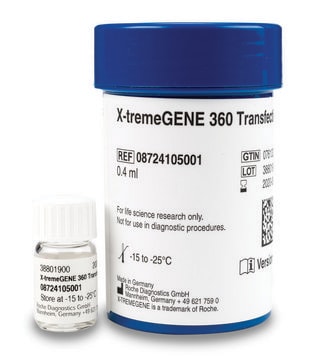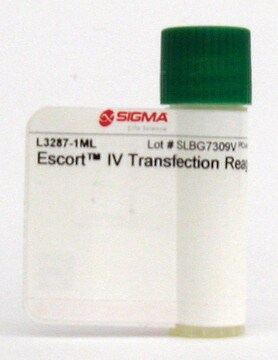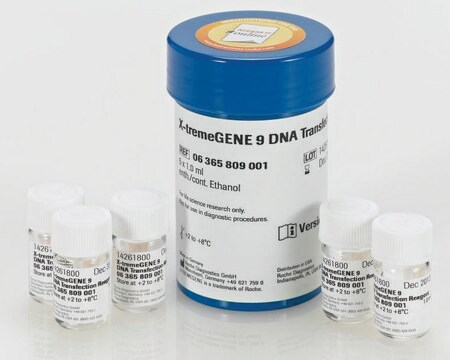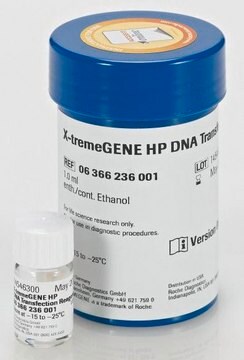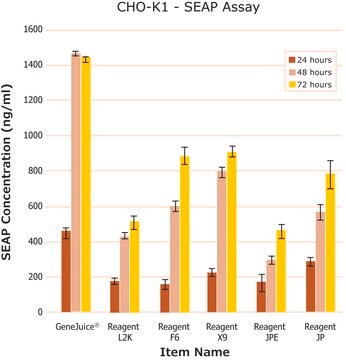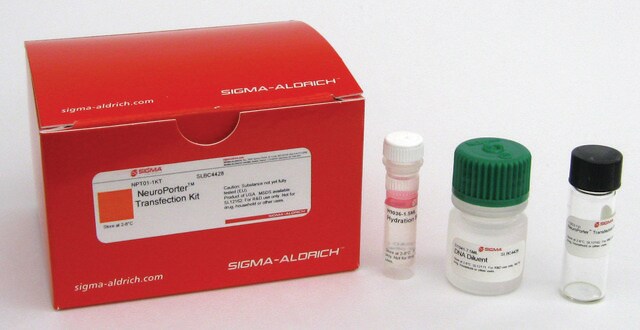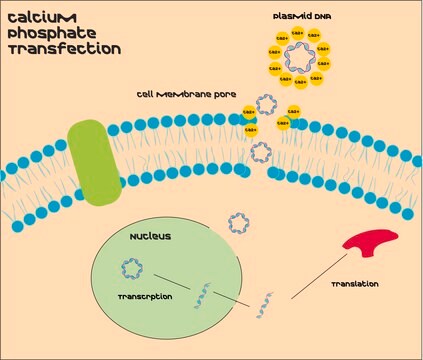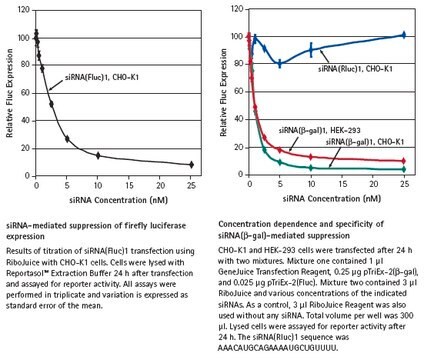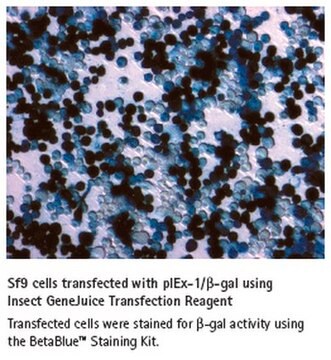推薦產品
一般說明
應用
A549
C2C12 肌管
心肌细胞(大鼠)
COS-7
成纤维细胞(大鼠)
生殖细胞(雄性大鼠)
肝细胞(大鼠和仓鼠)
HepG2
HeLa
Jurkat
角化细胞(人)
成肌细胞(小鼠和鹌鹑)
肌细胞(小鼠)
NIH3T3
PC-12
视网膜神经元(大鼠)
气管支气管细胞(绵羊)
特點和優勢
- 适用于稳定和瞬时转染
- 针对多种原代细胞进行了优化
- 低毒性
- 兼容血清和无血清转染方案
- PC-12 细胞的理想选择
成分
1 mg/mL 总脂质,溶于水
请注意,Escort™ III 使用的脂质特性为保密信息。
注意
原則
法律資訊
儲存類別代碼
10 - Combustible liquids
水污染物質分類(WGK)
WGK 3
閃點(°F)
Not applicable
閃點(°C)
Not applicable
個人防護裝備
Eyeshields, Gloves
客戶也查看了
文章
Transfection is the introduction of DNA, RNA, or proteins into eukaryotic cells and is used in research to study and modulate gene expression. Thus, transfection techniques and protocols serve as an analytical tool that facilitates the characterization of genetic functions, protein synthesis, cell growth and development.
Transfection is the introduction of DNA, RNA, or proteins into eukaryotic cells and is used in research to study and modulate gene expression. Thus, transfection techniques and protocols serve as an analytical tool that facilitates the characterization of genetic functions, protein synthesis, cell growth and development.
This brief webinar provides an overview of what transfection is and the methods that are used to introduce DNA or RNA into eukaryotic cells.
條款
Lipid Transfection Optimization Protocol
Escort™ III Transfection Reagent Protocol
Escort™ IV Transfection Reagent Protocol
我們的科學家團隊在所有研究領域都有豐富的經驗,包括生命科學、材料科學、化學合成、色譜、分析等.
聯絡技術服務